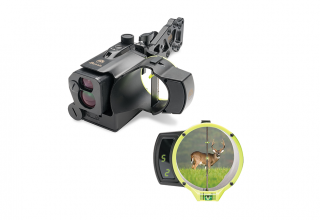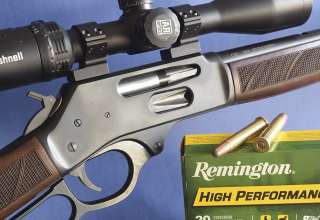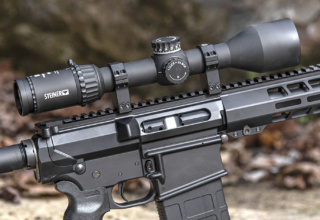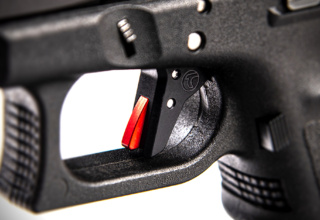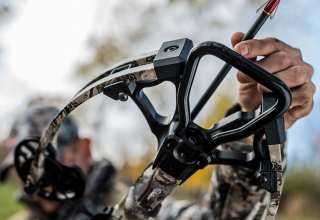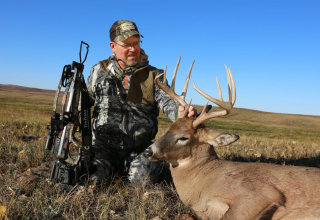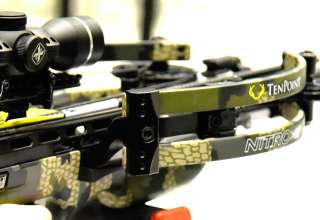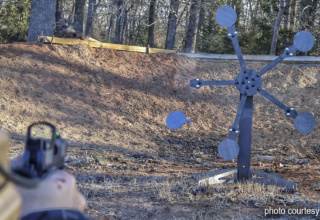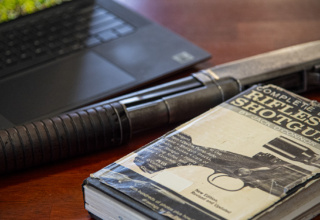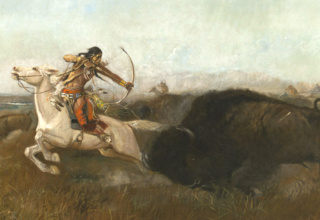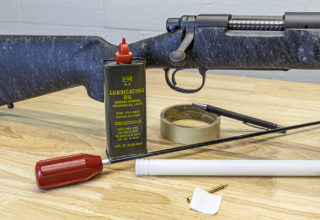The new SEVR broadheads have taken a commanding position in the bowhunting world, but are they the ultimate points for crossbow hunting?
by Rob Reaser
Those of you who follow the latest in bowhunting gear are no doubt aware of SEVR broadheads and their proven performance on big game animals. Their unique design was intended to deliver penetration unrivaled in the bowhunting segment for a mechanical head. The fact that the brand’s distribution model—direct-to-consumer only sales—and “any quantity you want” packaging offer additional benefits to the consumer is a side note (if a pretty big one).
Although originally engineered for western-style hunting, where long-distance shots require broadheads that can go deep on big-boned critters even after an arrow’s kinetic energy starts its nosedive, SEVR broadheads have proven their effectiveness on close-quarter encounters and with lighter draw weight bows. The question crossbow hunters seem to have regarding the SEVR is, “What about us?”
While SEVR has touted their broadheads as being crossbow compatible from the outset, we didn’t have an opportunity to test that claim last season, using them instead with our vertical bows. We were also curious how they would work with our crossbows because these broadheads use a rather light and pliant rubber O-ring to keep their rear-deploying blades tucked in the ferrule during flight and there is zero set-screw tension on the blades, meaning all that’s keeping those blades in place during launch is that thin O-ring.
So, we decided to validate SEVR’s crossbow credentials this season on a recent whitetail hunt. Heretofore, we’d been using Swhacker’s #207 two-inch cut two-blade mechanicals for most of our crossbow hunting and we couldn’t have been more pleased with the results—no premature blade deployments and no deployment failures. The bands securing the Swhacker blades do seem a bit tight (if you are familiar with them, you know what we mean) but they never fail to release the blades even on no-bone impacts on light-skinned whitetails.
How would the SEVRs stand up to our favorite crossbow broadhead? That’s what we intended to find out.
The “SEVR Concept”
At first glance, the SEVR broadhead may look like a minor variation on any number of two-blade mechanicals on the market today. The secret sauce, though, is not readily visible. When the blades deploy, beveled protrusions on the back of each blade overrun each other, locking them together in their open, deployed position and keeping them locked as they pass through the target. In essence, the two independent blades act as a single blade.
This is not a major difference from the operation of most forward-deploying blades, like our Swhackers, which seat back against the ferrule to maintain their open position as they penetrate an animal. The difference is that, unlike conventional forward-deploying blade broadheads, the rear-deploying SEVR blades have their pivot point (set screw) at the forward end of the ferrule. This allows the blades to pivot as a locked unit on the set screw. Thus, when a bone is hit, the locked blades simply pivot away from the bone, allowing the arrow to continue its forward path through the animal. As it passes the bone, the broadhead’s blades automatically re-center themselves in the ferrule to maintain a maximum cutting diameter. This not only aids in penetration, it also helps the arrow maintain a straight path through the animal, minimizing kinetic energy loss or deflection.
Speaking of deflection, this is always a concern of bowhunters when taking off-angle shots—especially front-quartering or overhead shots. Whereas more rigid blade designs can skip on a rib, for example, during an off-angle shot, the SEVR’s pivoting blade provides the best chance for the broadhead to maintain a straight path into the vitals.
SEVR Models and Construction
Currently, there are three models in the SEVR broadhead lineup. The first (and original) is the Titanium 2.1. It has a 2.1-inch cutting diameter and is available in 100- and 125-grain weights. If you want maximum entry and exit holes and are keen on one-piece titanium ferrule construction, this is the SEVR for you.
The Titanium 1.5 model is generally the same construction as the Titanium 2.1, only it has a smaller 1.5-inch cutting diameter. This one was intended more for western hunters shooting vertical bows, where typically longer shooting distances demand a broadhead that will deliver the highest penetration potential. Although they will work fine with a crossbow, our feeling is that this is not the most effective choice for that application.
Finally, there is the All-Purpose (AP) 1.7 head. Unlike the other two models, this one is made with a 7075-alloy ferrule and sharp stainless-steel tip. The cutting diameter is 1.7 inches, right between the 2.1 and 1.5 models. The idea behind this head is to offer consumers all the SEVR technological advantages (pivoting blade, practice mode, etc.) but at a lower price point. The AP 1.7 is offered in 100 grains and is priced at $11.99 each. That’s $2 less per broadhead than the titanium models.
As for blades, the titanium SEVR models use .032-inch thick stainless steel while the AP 1.7 gets even heftier .035-inch thick blades.
Practice with the Real Deal
Another unique feature of the SEVR design is what the company calls its Practice Mode. Each ferrule is tapped for two set screws. The first, as mentioned, serves as the blade pivot. The second tapped hole, located behind the first, is used to lock the blades in place for target shooting. When the blades are closed in the ferrule, the second set screw can be installed, securing the blades.
Although the cutting edge of the blades are flush or slightly proud of the ferrule, the heads can be shot into standard broadhead targets while in this configuration without being damaged or dulled. For the bowhunter, this is a huge advantage because it allows you to practice with the actual broadhead you will use for hunting. No more relying on practice heads and hoping they fly the same as the real thing.
For crossbow hunters who shoot-tune their arrows, the ability to make such fine-tune adjustments and ensure all arrows have the same point-of-impact across all effective yardages is a huge deal. For this fact alone, the SEVR heads earn top marks in our crossbow hunting ledger.
Buy What You Want or Need
Another benefit of SEVR broadheads is that they can be purchased in any quantity you want. If you want one broadhead or seven or seventeen, SEVR let’s you have it your way.
Being forced to buy broadheads by the 3-pack is something that has always irritated us. Most crossbow quivers accommodate three arrows, and three is a reasonable quantity to carry afield. When we bugger up a broadhead beyond use, it would be great to buy the one replacement we need and not two more that we don’t need because, hey, next year we might want to try another type of broadhead and then we’re stuck with something we won’t get our money out of.
SEVR’s business model takes this into consideration, so if you need only one broadhead for replacement, you can buy it.
Speaking of business model, SEVR only offers its products direct from the factory. You can’t find them at your local archery dealer, box stores, or any online retailers other than at SEVR. While it may seem a bit odd, this approach allows the company to keep costs down, which is then transferred to the consumer and it keeps a close and direct line of communication open between the company and the consumer. If you have a problem, you talk directly with the folks at SEVR.
Field Performance
When we transitioned from the Swhackers to the SEVR AP 1.7s, we noted a point-of-impact shift and adjusted our scope accordingly. Once zeroed, the SEVRs delivered astonishing accuracy, with same-hole impacts out to 40 yards—the farthest distance we are comfortable shooting a crossbow to ensure ethical kills. Whether that was a testimony to our crossbow, our arrows, the broadheads, or all the above is uncertain. Whatever the case, we knew that we could deliver a decisive kill shot within our established shooting range.
Our ultimate test came about 30 minutes before dark, when a young buck rolled by our stand. He stopped at 37 yards, offering a perfect broadside shot that we didn’t hesitate to take. The arrow completely passed through the chest cavity and stuck in the upsloping ground ten yards behind him. The buck piled up about 40 yards from where we hit him—quick, clean, and efficient.
In answer to the question we set out to uncover, yes, SEVR broadheads are certainly as deadly and as accurate on big game when launched from a crossbow as they are from vertical bows. Are they the ultimate crossbow broadhead? Let’s face it…critters have been felled by crossbows for centuries before SEVRs hit the market, and there are many broadheads out there today that get the job done. Our anecdotal evidence from taking deer and hog with SEVR broadheads is that they have never failed to produce devastating wound channels and decisive kills on the game we’ve shot—vertical and crossbow alike. But when you weigh the ability to target shoot with the broadheads you will be hunting with and the fact that you can buy the broadheads in any quantity you like, our scale certainly tips in favor of the SEVR brand.
Editor’s Note: SEVR is currently running several specials on their website. The Titanium Hunt Pack Special offers 7 heads for the price of 6 while the Titanium Season Pack Special gets you 13 heads for the price of 12, plus a free zippered broadhead case. Both specials provide free shipping. The company is also offering a number of Black Friday specials on SEVR apparel and accessories.







